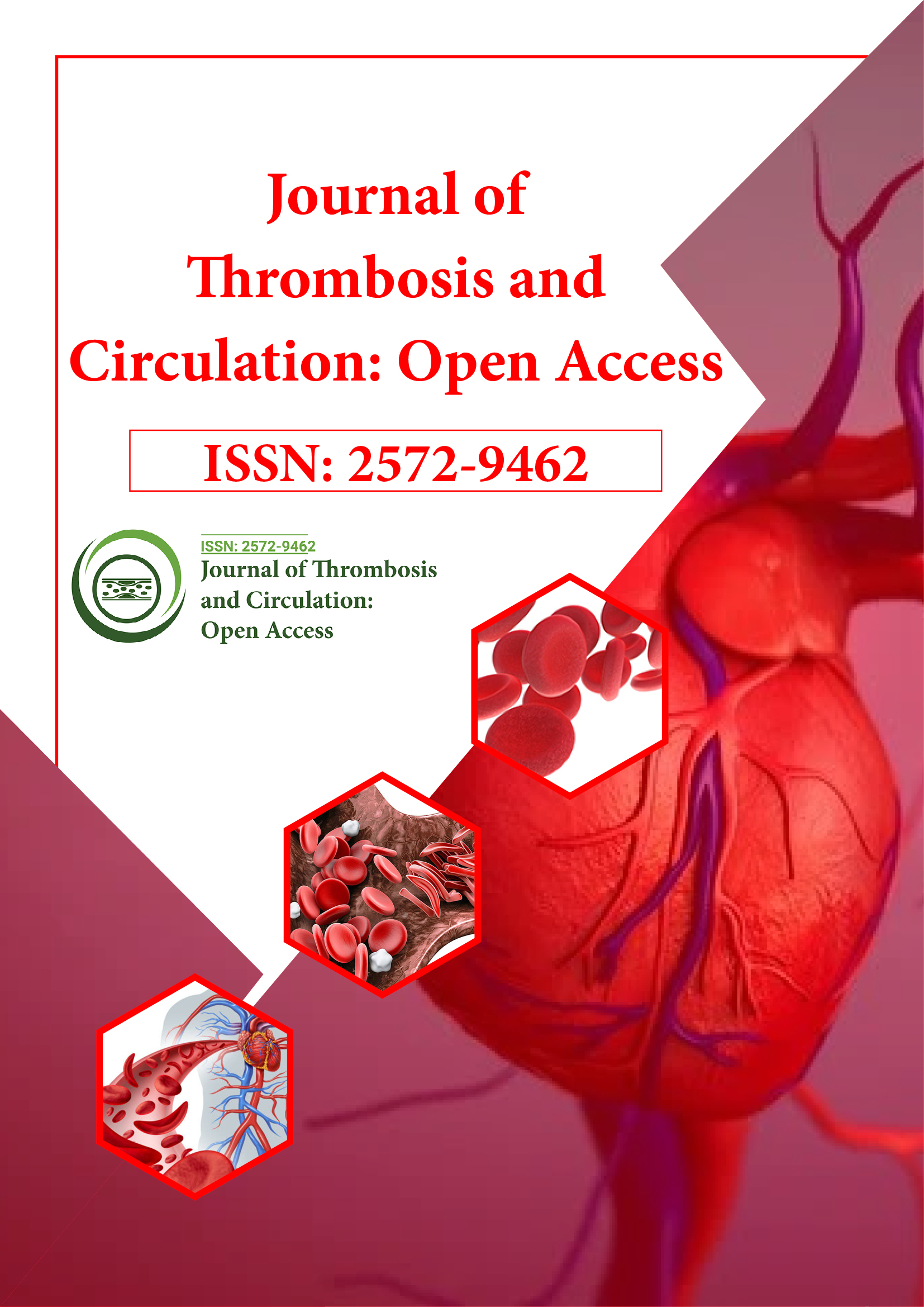Indexed In
- RefSeek
- Hamdard University
- EBSCO A-Z
- Publons
- Google Scholar
Useful Links
Share This Page
Journal Flyer

Open Access Journals
- Agri and Aquaculture
- Biochemistry
- Bioinformatics & Systems Biology
- Business & Management
- Chemistry
- Clinical Sciences
- Engineering
- Food & Nutrition
- General Science
- Genetics & Molecular Biology
- Immunology & Microbiology
- Medical Sciences
- Neuroscience & Psychology
- Nursing & Health Care
- Pharmaceutical Sciences
Opinion Article - (2023) Volume 9, Issue 6
Diagnosing and Managing Hepatic Vein Tumor Thrombosis in Hepatocellular Carcinoma
Kokudo Taku*Received: 18-Oct-2023, Manuscript No. JTCOA-23-23833; Editor assigned: 20-Oct-2023, Pre QC No. JTCOA-23-23833 (PQ); Reviewed: 06-Nov-2023, QC No. JTCOA-23-23833; Revised: 13-Nov-2023, Manuscript No. JTCOA-23-23833 (R); Published: 21-Nov-2023, DOI: 10.35248/2572-9462.23.9.259
Description
Hepatocellular Carcinoma (HCC), the most prevalent form of primary liver cancer, often presents multifaceted challenges due to its ability to manifest in various ways. One of the severe complications associated with HCC is Hepatic Vein Tumor Thrombosis (HVTT), which significantly impacts the prognosis and treatment outcomes for individuals diagnosed with this form of liver cancer. Understanding the complexities of HCC accompanied by HVTT is significant for effective management and improved patient care.
HCC, often association with chronic liver diseases such as cirrhosis resulting from hepatitis B or C infections, alcoholrelated liver disease, or non-alcoholic fatty liver disease, arises from hepatocytes, the primary cells of the liver. Its progression is marked by its invasive nature and the potential to spread to adjacent tissues, affecting the function of the liver and posing life-threatening consequences.
Hepatic vein tumor thrombosis, a complication specific to HCC, occurs when a blood clot forms within the hepatic vein due to the tumor's extension into the vessel. This phenomenon obstructs blood flow from the liver to the heart, causing severe complications. HVTT is often associated with larger and more aggressive HCC tumors, impacting the liver's blood drainage system and leading to portal hypertension, liver failure, and potentially fatal complications such as ascites, variceal bleeding, and hepatic encephalopathy.
Diagnosis of HCC accompanied by HVTT involves a series of imaging techniques, including ultrasound, Computed Tomography (CT) scans, Magnetic Resonance Imaging (MRI), and angiography. Identifying the presence and extent of HVTT is critical for determining the appropriate treatment strategy and predicting the patient's prognosis.
Treatment options for HCC with HVTT depend on various factors, including the extent of tumor involvement in the hepatic vein, the overall health of the patient, and the stage of HCC. Therapeutic approaches may include a combination of surgery, Trans Arterial Chemoembolization (TACE), radiotherapy, systemic chemotherapy, and targeted therapy. However, the management of HVTT often poses challenges due to the risk of bleeding and the compromised liver function.
Surgical intervention, such as liver resection or liver transplantation, might be considered for select patients with localized tumors and preserved liver function. However, the presence of HVTT may limit the feasibility of surgery due to the risk of complications and inadequate blood flow post-operation.
Transarterial Chemoembolization (TACE), a procedure involving the injection of chemotherapy drugs directly into the hepatic artery supplying the tumor, combined with blocking the artery's blood flow, is often used to manage unresectable HCC. This method helps target the tumor while minimizing systemic side effects, although its efficacy in treating HVTT is still a subject of ongoing research.
Systemic therapies, such as sorafenib and other targeted therapies, have shown some potential in extending survival and controlling the progression of advanced HCC. However, their efficacy in managing HCC with HVTT remains a challenging area of treatment due to compromised liver function and potential side effects.
The management of HCC associated with HVTT requires a multidisciplinary approach involving hepatologists, oncologists, interventional radiologists, and transplant surgeons. Palliative care may also play a significant role in improving the quality of life for patients with advanced disease, focusing on symptom management and emotional support.
Continuous research efforts are directed toward developing more effective therapies specifically targeting HVTT associated with HCC. Investigational studies exploring novel treatment modalities, including immunotherapy and combination therapies, aim to improve outcomes and extend survival for patients facing this complicated condition.
Moreover, preventive strategies addressing the risk factors for developing HCC, such as hepatitis B and C vaccinations, lifestyle modifications, and regular screenings for high-risk populations, are essential in reducing the incidence of both HCC and its associated complications, including HVTT.
In conclusion, hepatocellular carcinoma associated with hepatic vein tumor thrombosis presents a complex clinical scenario with significant challenges in management. A comprehensive approach involving early diagnosis, multidisciplinary treatment strategies, and ongoing research efforts is significant for improving patient outcomes and advancing the understanding and management of this severe complication of HCC. Efforts to develop more targeted and effective therapies and preventive measures remain essential in addressing this formidable aspect of liver cancer, with the ultimate goal of enhancing patient survival and quality of life.
Citation: Taku K (2023) Diagnosing and Managing Hepatic Vein Tumor Thrombosis in Hepatocellular Carcinoma. J Thrombo Cir. 9:259.
Copyright: © 2023 Taku K. This is an open-access article distributed under the terms of the Creative Commons Attribution License, which permits unrestricted use, distribution, and reproduction in any medium, provided the original author and source are credited.
